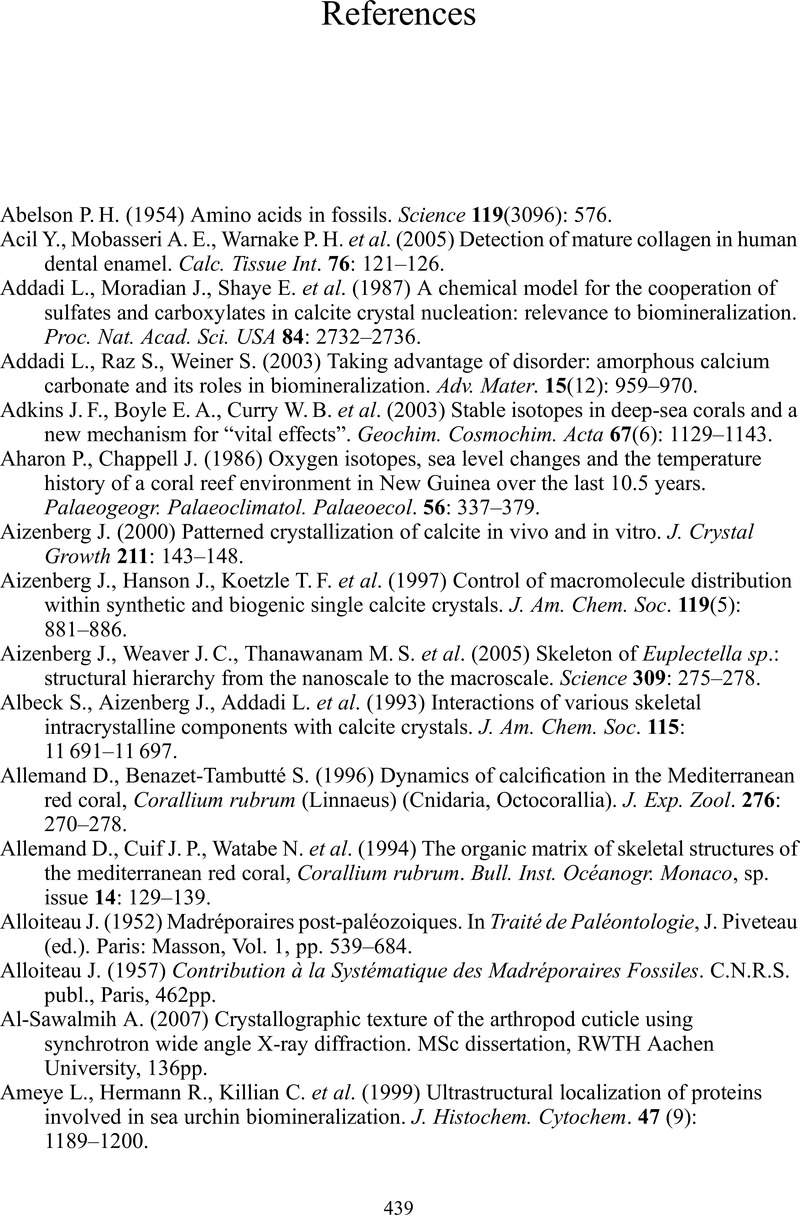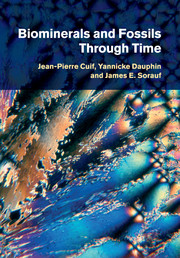Book contents
- Frontmatter
- Contents
- Preface
- Introduction: Milestones in the study of biominerals
- 1 The concept of microstructural sequence exemplified by mollusc shells and coral skeletons
- 2 Compositional data on mollusc shells and coral skeletons
- 3 Origin of microstructural diversity
- 4 Diversity of structural patterns and growth modes in skeletal Ca-carbonate of some plants and animals
- 5 Connecting the Layered Growth and Crystallization model to chemical and physiological approaches
- 6 Microcrystalline and amorphous biominerals in bones, teeth, and siliceous structures
- 7 Collecting better data from the fossil record through the critical analysis of fossilized biominerals
- 8 Results and perspectives
- List of references
- Name index
- Subject index
- References
List of references
Published online by Cambridge University Press: 10 January 2011
- Frontmatter
- Contents
- Preface
- Introduction: Milestones in the study of biominerals
- 1 The concept of microstructural sequence exemplified by mollusc shells and coral skeletons
- 2 Compositional data on mollusc shells and coral skeletons
- 3 Origin of microstructural diversity
- 4 Diversity of structural patterns and growth modes in skeletal Ca-carbonate of some plants and animals
- 5 Connecting the Layered Growth and Crystallization model to chemical and physiological approaches
- 6 Microcrystalline and amorphous biominerals in bones, teeth, and siliceous structures
- 7 Collecting better data from the fossil record through the critical analysis of fossilized biominerals
- 8 Results and perspectives
- List of references
- Name index
- Subject index
- References
Summary

- Type
- Chapter
- Information
- Biominerals and Fossils Through Time , pp. 439 - 476Publisher: Cambridge University PressPrint publication year: 2010



